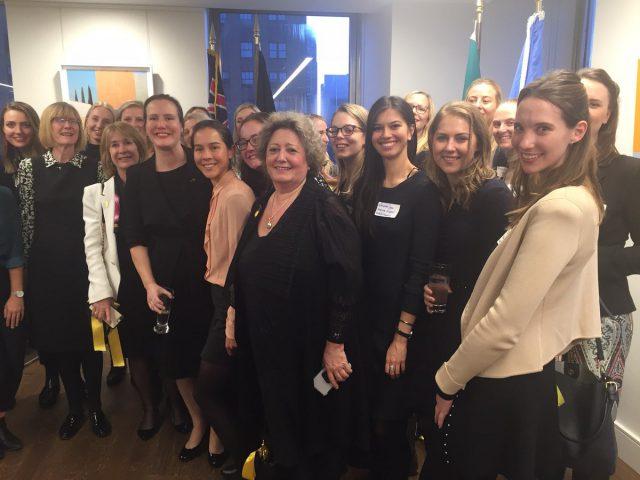
This article is the eleventh and last in a series on ‘Women, Peace and Security’ that The Strategist has published in recognition of International Women’s Day 2018. Eds.
Since International Women’s Day this year, ASPI has been running a series of pieces about a range of national and domestic security issues as they relate to women’s participation, engagement, leadership and perspectives on what is commonly known as the ‘women, peace and security (WPS) agenda’.
Many of these pieces focused on some of the steps taken to implement Australia’s current National Action Plan (NAP) on WPS, as well as identifying potential reforms relating to the range of issues covered, civil society consultation mechanisms and parliamentary engagement mechanisms that need to form part of Australia’s next NAP.
There’s a lot Australia can learn from other countries as it starts to revise the NAP. And Australia has lessons it can share with other countries. But there are several key challenges that need to be addressed if Australia is to ensure that it continues to gain ground on WPS and resist some international efforts to roll back progress on women’s equality and progress on peace and security.
First, WPS isn’t just relevant to the external aspects of Australia’s security, but also requires consideration of what’s happening within Australia’s borders. This has been a key finding from civil society report cards on the NAP, which have frequently highlighted the importance of consulting women on their own perceptions of security, as well as developing ‘a domestic program built around addressing inequality’. Yet for now, domestic security considerations aren’t a key consideration in the NAP.
Australia isn’t alone in this externally focused approach. Many Western and European countries that don’t suffer from internal conflict or post-conflict challenges historically do the same. Yet security issues such as violent extremism, terrorism and migration have started to fundamentally shift thinking about this approach.
For Australia, this means that there’s a role not only for DFAT, Defence and AFP in foreign policy, deployments or offshore activities, but also for agencies that have a domestic focus, such as Home Affairs. Those agencies need to step up and engage substantively in committing to WPS.
Second, there’s a need for sustainable funding and accountability across government to implement the agenda. The UN experience has shown that despite the international political commitment to WPS, battles continue to be fought in the budgetary committee about funding key posts in the field in delivering the agenda.
There has been some progress in Australia. Take the example of DFAT’s Gender Equality and Women’s Empowerment Strategy, which commits the department to ensuring that 80% of aid investment must address gender issues. While the success of this as a benchmark is yet to be measured, it’s a step in the right direction.
Parliament plays a particularly key role in making sure that there’s accountability across government in delivering on WPS commitments. Recommendations put forward by Gai Brodtmann and Linda Reynolds identify a bipartisan approach to ensuring that WPS receives more priority at the highest levels of government thinking on security, and warrants particular attention.
Third, WPS needs to be included as a core part of international security discussions when formulating foreign and defence policy. WPS is often forgotten during a crisis, or given less priority in discussions around so-called ‘hard security’ issues. It has historically been a ‘nice to have’ item that’s sidelined—left to be discussed by a group of women with an interest in it rather than being considered as a key part of the agenda.
WPS isn’t simply a ‘soft’ security issue, a ‘women’s issue’ or a ‘UN issue’. In the context of a military operation, failure to consider gender perspectives can have dire consequences for overall outcomes and mission success. Gender perspectives need to be considered at the outset of any policy analyses, international engagement programs, mission planning and intelligence assessments.
Defence’s commitment to operationalising the agenda has seen it make considerable strides in addressing some of these deficits, yet there’s still more work to be done to ensure that WPS is a routine consideration, rather than an exception.
Finally, there’s a need to have a diversity of voices at the table. Women aren’t homogeneous, and neither are their views or perspectives on security issues. Indigenous groups, refugees and veterans are just some of the groups that have previously been overlooked. We have to be careful that the way we frame the women, peace and security agenda isn’t framed by traditional masculine notions of security. That requires that women be represented and take part in the discussion.
The WPS 2018 series—like most analyses on WPS—contained an overwhelming number of female contributors, reversing the usual underrepresentation of women in security debates. This therefore provides a good opportunity to encourage any female analysts, academics, practitioners or experts out there to contact our editorial team to contribute to The Strategist.
More women and greater diversity in those contributing to the debate will only serve to strengthen the nature of our discussions around international security, including Australia’s approach to WPS.